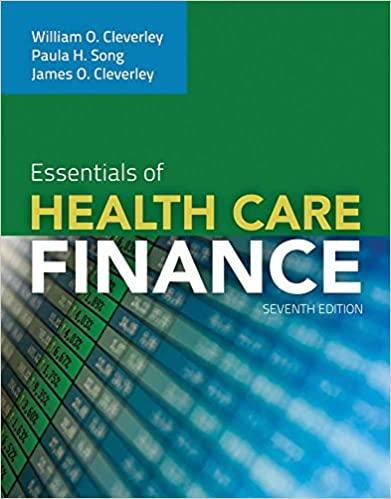Answered step by step
Verified Expert Solution
Question
1 Approved Answer
Introduction: On November 2 0 , 2 0 2 3 , Matt Dylan, the CFO of MM 2 Corporation, is preparing for the November meeting
Introduction:
On November Matt Dylan, the CFO of MM Corporation, is preparing for the
November meeting of the project expenditure committee PEC Dylan is one of the five
executive officers who are members of the PEC. Ten projects for this meeting represented nearly
$ million in capital expenditure requests. With the fiscal years end approaching in January,
there was a need to determine which projects best fit MMs future growth and capital
investment plans, with the knowledge that these plans, if adopted, would be shared early in
with the board and investment community. In reviewing the ten projects before the committee, it
was clear to Dylan that five of the projects, representing about $ million in requested capital,
would demand the more significant part of the committees attention and discussion during the
meeting.
The PEC was keenly aware that MM had been a strongperforming company in part because of
its successful investment decisions and continued growth. Moreover, MM management is
committed to continuing the companys growth strategy of investing in approximately new
projects annually. Each investment decision would leave longterm implications for the company
as an underperforming project would drag on earnings and be challenging to turn around without
significant investments of time and money. Whereas a top performing project would add
financial and strategic value for years to come.
Project Expenditure Approval Process:
The PEC comprises a team of top executives who meet monthly to review all capital project
requests CPRs over $ CPRs were either approved by the PEC or in the case of
projects larger than $ million, require approval from the board of directors. Project proposals
varied widely and included remodeling, relocating, rebuilding, R&D information technologies,
closing an existing store, and building a new store. A typical PEC meeting involves the review of
to CPRs All the proposals were considered economically attractive, as any CPRs with
questionable economics were usually rejected at the lower levels of review. In the rare instance
when a project with a negative NPV reached the PEC, the committee may consider the project in
light of its strategic importance to the company.
PEC meetings last several hours as each project receives scrutiny from the members. The process
was designed to be rigorous because the PEC recognized that capital investment could
significantly impact the company's shortterm and longterm profitability. In addition to the large
amount of capital at stake, approvals and denials also had the potential to set precedents that
would affect future decisions. For example, the committee might reject a proposal with a positive
NPV if the investment amount requested was much higher than usual and, therefore, might create
a troublesome precedent for all subsequent requests. Despite how much the projects differed, the
committee was usually able to reach a consensus decision for the vast majority of them.
Occasionally, however, a project led to such a high degree of disagreement within the committee
that the CEO made the final decision.
Projects typically require to months of development before being forwarded to the PEC for
consideration. The committee considers several factors to accept or reject a project. An
overarching objective was to meet the corporate goal of adding new investments per year
while maintaining a positive image. Projects also needed to fulfill various financial objectives,
starting with providing a suitable financial return measured by discounted cash flow metrics.
Other financial considerations included profit, earnings per share impacts, total investment size,
impact on sales of other nearby locations, and sensitivity of NPV and IRR to sales variations.
Projected sales were determined based on economic trends and demographic shifts but also
considered the risks of entering new competitors and competition. Lastly, the committee attempts
to keep the project approvals within the capital budget for the year. If projects were approved
more than the budget, MM would likely need to borrow money to fund the shortfall. Adding
debt unexpectedly to the balance sheet could raise questions from equity analysts as to the
increased risk to the shareholders and the ability of management to project the companys
funding needs accurately.
Other considerations include tax and realestate incentives from local communities and area
demographics. MM typically purchases properties where it built stores, although leasing was
occasionally considered. Population growth and affluent communities were attractive for the
retail side of its business. However, these factors also invited competition. Occasionally, MM
would strategically build a new store to block other retailers despite marginal shortterm returns.
When deciding whether to open a new store, the PEC was often asked to consider alternative
store formats.
Step by Step Solution
There are 3 Steps involved in it
Step: 1

Get Instant Access to Expert-Tailored Solutions
See step-by-step solutions with expert insights and AI powered tools for academic success
Step: 2

Step: 3

Ace Your Homework with AI
Get the answers you need in no time with our AI-driven, step-by-step assistance
Get Started


